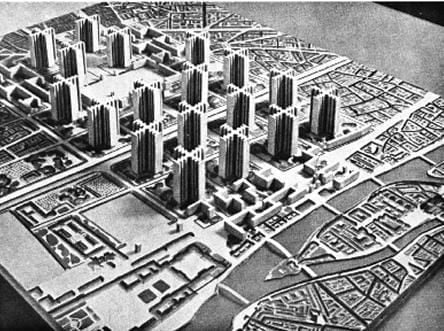Table of Contents
Utopia Definition
Utopia is derived from the Greek out-tops “No place” or “Nowhere”.
It was first coined by Sir Thomas More in 1516 in his book “Utopia” which described a society where there is a perfect political and social system on an imaginary land. In his book, he ultimately poses the question, “Can a perfect world ever be released? “
Hence Sir Thomas More is known to have invented the idea of Utopian Society.
Origins
The major starting point could be seen in the 19th century by Protestant Reformation. The Protestant Reformation is of many types, majorly of the churches. In 1500, the church was considered the most powerful in Western Europe in both political and spiritual manner. The popes were usually treated as the king rather than spiritual leaders, where they were engaged in commanding armies sometimes in wars and other political issues this corruption in the church increased until an attempt at reformation to church practice by Martin Luther king’s action in the early 1500s.
These actions generally lead to the belief that people’s hard work is a part of God’s plan for contributing to society. And many early communities had similar ideologies, such as the Shakers, Brook Farm, The Rappites, and The Oneida Community.
Therefore, the early 19th century became an opportunity for America to experiment with the idea of community living, whereas Europe was in a religious war. Hence, America became a place to start again, and this led to the formation of the Utopian Societies, which would be self-contained, again, and communal. Few are briefly explained below-
- The Shakers – Initiated in 1758, which was characterized by Communal Living, Productive Labour, Celibacy, Pacifism, and gender equality. In this, several other communities had similar ideologies. They were-
- Enfield Shakers Historic District
- Hancock Shaker Village
- Shakertown at Pleasant Hill Historic District
- Canterbury Shaker Village
- Mount Lebanon Shaker Society
- Brook Farm – Agriculture and Education Institute was established between 1841 to 1847. It was founded by Transcendentalists on the principle of “Plain Living”.
- The Rappities (Harmony Society)- Founder Johann Georg Rapp in 180. Society believed in harmony that is the Bible was the sole authority.
- The Oneida Community -Founded and led by John Humphrey Noyes of Brattleboro, Vermont. He studied theology and was involved in the abolitionist movement and his followers were then known as Perfectionists and practiced “Complex Marriage” that is married to a group and not a single partner.
The way these social and political reforms reflected this idea of Utopian Society was seen in architecture (emerging in the 19th century) as well.
Usually, this architectural style could be referred to as “fantastic” or “Visionary” which would be built without constraints and planning regulations. Many of these ideal society plans were limited to the drawing form and were the future construct.
Timeline
1841- Brook Farm, communal joint stock company, Massachusetts
1848- The Oneida Community, communal religious organization practicing free love and complex marriage, New York
1874- Valcour Community – Free love community, Lake Champlain
1879- The Oneida Community abandons the complex marriage
1900- The city of Shalam, utopian community, El Paso
1922- The population of the Shaker Community declines
Timeline Utopian Communities
Renaissance – Ideal City
The idea of this type of city was mainly rationalizing the living in urban fabric through the plans which focused on the geometrical scheme along with the functional requirements. The ideal city represents the perfect model where it has the geometrical play and depth of scale and proportions with the recent invention of perspective drawing along with the functionalists such as the palace, fortifications, housing structures, and the theatre.
Other examples could be seen as more practical Utopian Communities as the City of Palmanova, which had radiant streets and included military devices.
Characteristics of Utopian Architecture
This style of architecture has no strict definition or physical attributes, but it aims for the freedom of expression and thought through the workings of society by conceptualizing the self-sufficient, independent society. The focus is on the improvement of the social, economic, and political upliftment through the equality of spaces and using the resources which are not consumer based. In this era, the advancement in technological and scientific development could be seen. The earliest utopian designers were known as futurists. They focused mainly on technology, giving aesthetics less importance.
Others looked at the opportunity to see this as a form of aerial design where they thought of designing the central spine in the city, which would act as the transit hub.
Revolutionary Architects
The second half of the 18th century could be considered a highlight. Some influential architects were Etienne-Louis Boullee and Claude-Nicolas Ledoux. Whereas Boulle believed in symmetry, proportions, and variety and the composition of these shapes together. The most famous example could be the Cenotaph for Sir Issac Newton 1784. Whereas Ledoux believed in the social, educational, and political role of an architect. His most famous project was the Ideal City of Chaux, the expansion of Royal Saltworks at Arc-et-Senans. (Started in 1775 but never completed)
Utopian Vision in the 20th Century
Because of the industrialization movement, industrial products such as glass, steel, and reinforced concrete were widely manufactured and used by avant-garde architects. Along with these parallel movements in the Art was there which found new materials and techniques for production.
A prime example could be seen below –
Futurists were continuously looking and thriving for technological advancements.
Italian Architect AntonioSant’Elia- Twin ideals of mechanization and motion, proposing a vision of a modern city in the form of a machine. Citta Nuova (1912-1914) where had multi-level interconnected linkages with the skyscrapers along with elevators, bridges, and more features. It was seen as a paradox where eventually it was seen as a means to destroy the old world. It was perceived as an illusion.
At the same time in Europe, other forms and styles of architecture were discovered, like Cubist and Constructivist architecture, many of which were seen as far from achieving it in reality. A few examples could be seen as the Monument to Third International, designed by Vladimir Talin.
Along with this, the most renowned architects were Le Corbusier and Frank Lloyd Wright. Le Corbusier had done redevelopment of central Paris in 1925, which was radical and involved the demolition of two square miles of downtown Paris. He wrote, “Paris of tomorrow could be magnificently equal to the march of events that is day by day bringing us ever nearer to the dawn of a new social contract”. On the other hand, Frank Lloyd Wright was of the thought that there should be perfect harmony between the built and natural environment. His vision of utopia could be reflected in Broadacre City 1932, where there were features such as one acre of ground for each household, removing everything urban.
Utopian Vision in 1960 and 1970
This period was seen as the period of hope and innovation, which was followed by World War 2 where optimism, possibility, and a sense of community and togetherness could be once again redefined in all tangible and intangible aspects. There were a few notable architects which were seen in this era.
Paolo Soleri was an Italian Architect, his notable work was Hexahedron Arcology, which was an artificial mountain in the shape of 2 pyramids housing 170,000 residents individually. Other Examples from this period were Archizoom and SuperStudio in Italy, Ant Farm in San Francisco, and Archigram in Uk. A famous example of them was Instant City in 1969.
Design Experiments
Palmanova, Italy – Harmonious radial symmetry was intended to reflect the goodness of its incoming inhabitants. it is home to about 5,400 residents
Arcosanti, Arizona( 1970) – The sign at the entrance reads “If you are truly concerned about the problems of pollution, waste, energy, segregation, intolerance, population containment, fear, and disillusionment, join us”
Ordos, China- It features 100 villages designed by architects from all over the world. Raphael Oliver Said “The whole place feels like a post-apocalyptic space station from a science-fiction movie”
Drop City, Colorado – In this community, they restricted the punishment, and the meals were cooked together giving the hippie commune vibe.
Le Corbusier’s Radiant City( 1924)- It was generally quoted as a living machine, where there were designated commercial, business, and leisure residential purposes.

Auroville, India(1968)- It was established by Mirra Alfassa. It is the world’s most significant spiritual utopia. With an ideology belongs to humanity as a whole.
Frank Lloyd Wright’s Broadacre City- This city was based on the idea of modern technologies and mechanical production.

Pragmatic Utopia
This is a movement that focuses on socially, environmentally, and economically sustainable design. Future design considering humanity living in peace and harmony is considered “pragmatic Utopianism”. With this BIG (Ingles, 2009) says that architecture should be looked at in two parts- First, Approaching utopia in theoretical, and philosophical, with the help of computer visualizations Secondly, the pragmatic approach to building is well organized but boring so BIG came up with the third approach called pragmatic utopia, although they are two contradictory approaches where pragmatic deals with practicality rather than theory and utopia conflict the reality.
Thus, pragmatic utopia could be defined as the marriage between the practical approach to reality and an ideal way of living through sustainability for future generations. Majorly the BIG have explored themselves into the concept of “Pragmatic Utopia” through experimentation with lighting design.
Conclusion
People have always tried to make the world a better place and have tried to seize the opportunity seen by them in every manner possible. Everything has its positive and negative and everything could be seen from the individual’s perspective.
The movement of Utopia persists today in a social, political, and technological manner. The Utopian Architecture was seen as too ambitious and far away from the detail required to construct it, it was seen far away from reality. But the intent of bringing society together in all aspects is the intention we are all seeking towards. Although I believe the attempts of the great visionary have not gone in vain, it becomes a vital tool and case study to look up to and learn and improve from.




